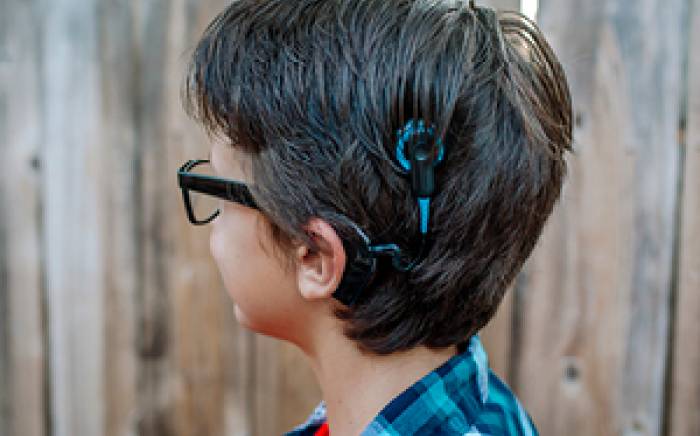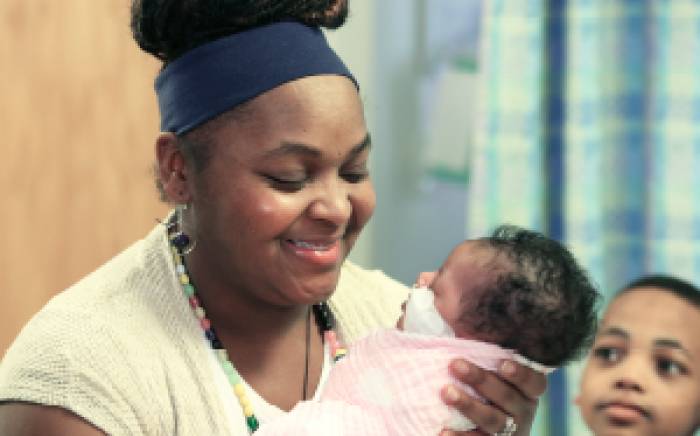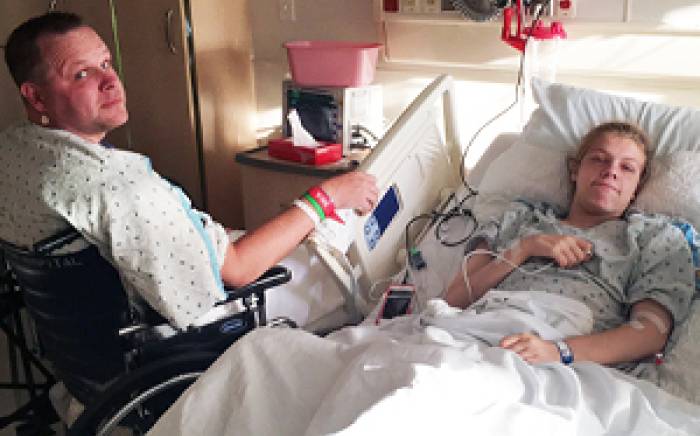The following case study was used by Andrew J. White, MD, the James P. Keating, MD Professor of Pediatrics and division director of pediatric rheumatology, Washington University School of Medicine, and director of the St. Louis Children’s Pediatric Residency Program, as part of the “Patient of the Week” (POW) series. Many of the POW case studies cover uncommon illnesses, or common illnesses with unusual presentations. If you would like to be added to the POW email distribution, send an email to white@kids.wustl.edu.
 CC:Vomiting and weight loss
CC:Vomiting and weight loss
HPI: 10-year-old girl presents to the ER with four days of vomiting and seven months of decreased appetite. She does not endorse abdominal pain but says she feels full all the time. She has lost 15 pounds in the last year. Speaking to the patient alone, she is tearful but denies thoughts of depression or wanting to hurt herself. She eats three meals a day but has tried to become a vegetarian since losing her appetite. Parents do not think she is eating all three meals, and recently she has been refusing to eat foods that she used to love. They think that she worries a lot and sometimes has trouble falling asleep at night. Denies recent fevers, headaches, cough, rhinorrhea or sore throat.
PMH: Intermittent constipation. Up-to-date on vaccinations. PSH: None Meds: None Allergies: NKDA
FH: Paternal grandfather with colon cancer and thyroid disease. No celiac disease or IBD.
SH: Lives at home with parents, a 7-year-old sister and two cats. Feels safe at home. Is starting 5th grade in the fall. Has always done well in school, denies bullying. She denies feeling overweight or worrying about what she weighs. She often has trouble falling asleep at night and is often tired in the morning. Reports intermittent sadness and decreased energy. Has not yet started menses. No alcohol or drug use.
ROS: No fever, rash, chest pain, cough, headaches, visual changes or extremity weakness.
Exam: VS: T 98.3, HR 106, RR 20, BP 100/65, SpO2 99 percent, Wt 32.5 kg (71 lbs; 46th percentile), Ht 146 cm (4'9"; 87th percentile), BMI 15.4 (22nd percentile)
Gen: thin girl in no distress, lying on bed, quiet but responsive to questions
HEENT: Mucous membranes moist, no rhinorrhea CV: RRR, no murmurs, gallops or rubs Lungs: Clear with no retractions or tachypnea Abd: soft, non-tender, no masses or hepatosplenomegaly Ext: warm, well-perfused, moves all extremities equally
Neuro: PERRL, EOMI, alert and appropriately answers questions, face symmetric, balance normal
Labs and imaging: CMP: Na 138, K 4.4, Cl 101, CO2 25, BUN 13, Cr 0.56, Glu 69, Ca 10.8, Pr 8.3, Alb 5.2, AST 23, ALT 10
TSH: 3.65
Free T4: 1.1
CBC: 9.9>13.7/42.8<386
UA: 3+ ketones, spec grav > 1.030. Trace LE, negative nitrites
Micro: 2-5 WBCs, neg for RBCs, 2-5 epithelial cells, 1+ bacteria, 1+ mucous
Abdominal XR: no sign of intraperitoneal free air, normal bowel gas pattern without evidence of obstruction
Initial Diagnoses: Anorexia and constipation. Discharged from ED with Zofran 4mg TID PRN and MiraLax 1 tsp per day.
Course: She was discharged home and followed up with her PCP, who documented continued episodes of vomiting, often in the mornings but sometimes in the afternoons. She continued to feel anxious with trouble falling asleep and had trouble ingesting enough MiraLax to help with her constipation. Her physical exam remained unremarkable aside from low BMI. Head imaging was discussed but deferred, as she had clear sharp disks on fundoscopic exam and the family and child were busy. She was prescribed Pepcid and Pediasure, and was referred to a counselor and GI physician.
She was evaluated by GI, who performed an upper endoscopy with biopsy, upper GI with small bowel follow through, abdominal ultrasound, and celiac screen, all of which were normal. She also met with a counselor and followed up with an NP at her PCP office, who referred her to an eating disorder treatment facility. After undergoing evaluation there, it was recommended that she enter the inpatient program. Her parents instead opted for outpatient treatment. She was started on Mirtazapine, which initially increased her appetite, but the effect was not sustained. She completed the intensive outpatient program. However, by the next visit she had lost another 10 pounds. She went to see her PCP with a new complaint of two days bilateral throbbing headaches in addition to continued appetite loss and vomiting, generally in the mornings. The PCP arranged for her to be directly admitted to SLCH. On admission, her BMI was 13.9 and on exam she had some truncal ataxia and a positive Romberg sign. An MRI was ordered for the next morning.
At 4 a.m., her mental status was normal, but by 5:45 a.m. she was no longer responsive and had sluggish pupils and an R lateral gaze palsy. She was transferred to the PICU and a stat head CT showed a large posterior fossa mass with obstructive hydrocephalus, transependymal flow, and edema. Her GCS was <5, and she became bradycardic and hypotensive. She was given mannitol and was hyperventilated. A bedside EVD was placed. MRI showed a 4.3 x 4.0 x 4.1 cm posterior fossa mass arising from the 4th ventricle with no spinal metastasis. Four days later she went to the OR for tumor removal. She recovered well from the surgery and had a rapid increase in appetite. Her post-op course was complicated by Acinetobacter meningitis/ventriculitis and a second surgery for removal of residual tumor. She was discharged 23 days after her first surgery. She is scheduled for six weeks of radiation therapy with concurrent weekly vincristine treatments. Pathology of the mass revealed the final diagnosis of Grade IV medulloblastoma.
Discussion: Tumors of the central nervous system may present with weight loss and poor appetite. This pattern of decreased appetite with normal linear growth, when associated with gliomas or astrocytomas of the hypothalamus or thalamus, is called “Diencephalic syndrome” 1. This syndrome is classically found in young children (generally <12 months of age) presenting with failure to thrive 2, 3. There is often a latency of many months to years between symptom onset and diagnosis due to the lack of neurologic exam findings such as cranial nerve palsies or headaches 2, 4. While this patient’s age and tumor type/location are not consistent with classic Diencephalic syndrome, her course and disease process share several similarities. Early satiety (satis, from the Latin, meaning “enough”) is one of these symptoms. There are case reports and case series reporting older children and adolescents presenting with weight loss that was initially suspected or diagnosed as an eating disorder until subsequent imaging revealed an intracranial mass 5-8. Depending on the type and location of the tumor, treatment may include surgical resection, chemotherapy and/or radiation. Prognosis is variable.
Conclusion: Eating disorders are relatively common and should be considered in the differential of an adolescent with weight loss. However, for patients without body dysmorphia, other differential diagnoses should also be entertained. It is possible for brain tumors to grow to a substantial size while only producing nonspecific symptoms. Thus, it is important to exclude intracranial pathology in not only infants but also in older children who present with decreased appetite, weight loss and/or failure to thrive.
References:
1. Burr, I. M., Slonim, A. E., Danish, R. K., Gadoth, N. & Butler, I. J. Diencephalic syndrome revisited. J. Pediatr. 88, 439–444 (1976).
2. Poussaint, T. Y. et al. Diencephalic syndrome: clinical features and imaging findings. Am. J. Neuroradiol. 18, 1499–1505 (1997).
3. Perilongo, G. et al. Diencephalic syndrome and disseminated juvenile pilocytic astrocytomas of the hypothalamic-optic chiasm region. Cancer 80, 142–146 (1997).
4. Fleischman, A. et al. Diencephalic Syndrome: A Cause of Failure to Thrive and a Model of Partial Growth Hormone Resistance. Pediatrics 115, e742–e748 (2005).
5. Chipkevitch, E. & Fernandes, A. C. L. Hypothalamic tumor associated with atypical forms of anorexia nervosa and diencephalic syndrome. Arq. Neuropsiquiatr. 51, 270–274 (1993).
6. Chipkevitch, E. Brain tumors and anorexia nervosa syndrome. Brain Dev. 16, 175–179 (1994).
7. Rohrer, T. R., Fahlbusch, R., Buchfelder, M. & Dörr, H. G. Craniopharyngioma in a Female Adolescent Presenting with Symptoms of Anorexia Nervosa. Klin. Pädiatr. 218, 67–71 (2006).
8. Distelmaier, F. et al. Disseminated pilocytic astrocytoma involving brain stem and diencephalon: a history of atypical eating disorder and diagnostic delay. J. Neurooncol. 79, 197 (2006).









